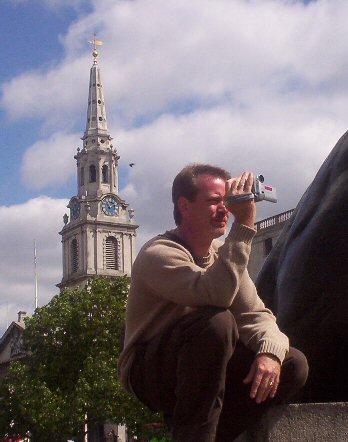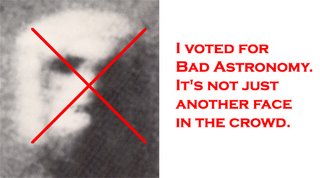Is The Big Bang A Big Goose Chase?
Space.com is reporting on a new study in an article entitled Study Questions Big Bang (Scientists Question the Study).
In the September 1st issue of The Astrophysical Journal, Richard Lieu from the U. of Alabama and his team used the Wilkinson Microwave Anisotropy Probe (WMAP for short) to take a look at the Cosmic Microwave Background inside galaxy clusters. They were specifically looking for a particular "shadow effect", called Sunyaev-Zel'dovich.
The cosmic microwave background (CMB) radiation is a faint afterglow permeating the universe. Many scientists have hailed CMB observations as strong evidence for the Big Bang.
A shadow effect called Sunyaev-Zel'dovich is a distortion that affects CMB photons inside galaxy clusters. It occurs when high-energy electrons inside the clusters crash into the more sluggish CMB photons, boosting them to higher energy levels.
This shifts the CMB spectrum inside clusters from low to higher energies. The dearth of low-energy microwaves inside the clusters means that instruments like the Wilkinson Microwave Anisotropy Probe (WMAP) should see fewer low-energy CMB photons inside clusters compared to outside.
"That's the shadow effect—that at lower energy you see the CMB has a decrement in the direction of the cluster," explained Niayesh Afshordi, an astrophysicist at Harvard University who was not involved in the study.
Bottom line - they didn't see enough of it, which at first blush might seem to cast doubt on the whole Big Bang thing.
Problem - WMAP isn't really the best tool for the job. Enter astrophysicist David Spergel of Princeton.
But Spergel says he seriously doubts the conclusions reached by Lieu's team are correct for a number of reasons. First, WMAP, one of the instruments used by Lieu's team, is not the best instrument for detecting the shadow effect, Spergel said. The shadow effect "occurs on small angular scales predominately, while WMAP is designed to look at large scales across the sky," he said.
Secondly, other astronomers have confirmed the shadow effect in other galaxy clusters using not only WMAP, but also with ground-based radio telescopes, which have higher resolution and are thus better able to spot the effect.
Counterpunch from Lieu...
Lieu counters that WMAP's resolution might be a problem for far away galaxy clusters, but points out that the clusters he examined were relatively close by, and certainly close enough for WMAP to see a shadow effect if it existed.
"The WMAP's resolution is not an excuse here," Lieu said.
Ok, so Lieu isn't actually saying the Big Bang didn't happen, he's just not down with WMAP not being the right tool for the job.
It's possible that there's something scientists don't understand yet about galaxies and galaxy clusters (Afshordi's thought), or that the particular galaxies Lieu looked at are such strong radio emitting galaxies that we don't see a shadow (Lieu's thought). Like staring into a search lamp and looking for shadows.
So what happens when scientists disagree? They go back and look some more. Notice - no lawyers involved here.
Just so y'know.
The abstract of the paper by Lieu and company can be found here, subscription required for the full paper.












